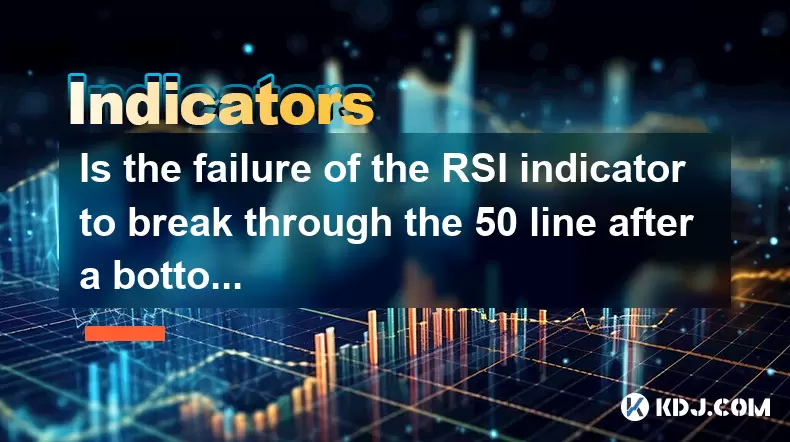-
 Bitcoin
Bitcoin $114800
-0.87% -
 Ethereum
Ethereum $4776
1.26% -
 XRP
XRP $3.035
-0.59% -
 Tether USDt
Tether USDt $0.9997
0.01% -
 BNB
BNB $868.3
-2.21% -
 Solana
Solana $207.8
2.24% -
 USDC
USDC $0.9999
0.00% -
 Dogecoin
Dogecoin $0.2321
-2.70% -
 TRON
TRON $0.3658
1.42% -
 Cardano
Cardano $0.9042
-1.85% -
 Chainlink
Chainlink $25.67
-0.24% -
 Hyperliquid
Hyperliquid $43.96
1.17% -
 Sui
Sui $3.679
-2.11% -
 Stellar
Stellar $0.4091
-1.83% -
 Ethena USDe
Ethena USDe $1.000
-0.01% -
 Bitcoin Cash
Bitcoin Cash $593.4
0.58% -
 Avalanche
Avalanche $25.53
0.89% -
 Hedera
Hedera $0.2476
-1.21% -
 Litecoin
Litecoin $119.7
-1.84% -
 UNUS SED LEO
UNUS SED LEO $9.609
0.34% -
 Toncoin
Toncoin $3.352
-0.91% -
 Shiba Inu
Shiba Inu $0.00001292
-2.45% -
 Uniswap
Uniswap $11.08
-1.13% -
 Polkadot
Polkadot $4.100
-1.09% -
 Cronos
Cronos $0.1609
4.53% -
 Dai
Dai $0.9999
0.00% -
 Bitget Token
Bitget Token $4.706
-0.88% -
 Aave
Aave $350.1
2.03% -
 Monero
Monero $268.0
0.06% -
 Ethena
Ethena $0.7069
-4.77%
Is the failure of the RSI indicator to break through the 50 line after a bottoming divergence a sign of weakness?
A bottoming RSI divergence suggests weakening bearish momentum, but if the RSI fails to break above 50, it may signal lack of bullish conviction—highlighting potential weakness rather than reversal.
Aug 13, 2025 at 11:35 am

Understanding RSI Bottoming Divergence in Cryptocurrency Trading
The Relative Strength Index (RSI) is one of the most widely used momentum oscillators in the cryptocurrency trading community. Traders rely on it to identify overbought and oversold conditions, as well as potential reversal patterns. A bottoming divergence occurs when the price of a cryptocurrency makes a lower low, but the RSI forms a higher low. This pattern is generally interpreted as a bullish signal, suggesting that downward momentum is weakening and a potential upward reversal may be imminent. However, the presence of a divergence alone does not guarantee a successful price reversal. The behavior of the RSI following the divergence—specifically whether it breaks above the 50 midline—plays a critical role in confirming the strength of the signal.
The Significance of the RSI 50 Level
The 50 level on the RSI is more than just a midpoint; it acts as a psychological and technical threshold. When the RSI crosses above 50, it indicates that upward momentum is beginning to dominate. Conversely, when it remains below 50, bearish pressure may still be in control. In the context of a bottoming divergence, a failure to push the RSI above 50 after the formation of the divergence raises concerns. This suggests that despite the apparent weakening of selling pressure, buyers have not yet gained sufficient strength to shift the momentum in their favor. The inability to breach this level can be seen as a lack of conviction among bulls, potentially undermining the bullish implications of the divergence.
Interpreting Failed RSI Breakouts After Divergence
When the RSI fails to break above the 50 line after a bottoming divergence, it may indicate underlying weakness in the market structure. This scenario often unfolds in one of several ways:
- The price forms a lower low, and the RSI forms a higher low, meeting the criteria for a bullish divergence.
- Instead of rising above 50, the RSI stalls near 45–49, showing hesitation.
- Price action remains range-bound or resumes a downtrend shortly after.
This failure can reflect several market dynamics. One possibility is that short-term buyers are stepping in to prevent steep declines, creating the appearance of bullish momentum, but larger institutional or whale participants are not committing capital to drive a sustained rally. Another interpretation is that the market is undergoing a consolidation phase, where neither buyers nor sellers are able to assert dominance. In such cases, the failure to break 50 may not signal immediate weakness but rather indecision.
How to Analyze Price and Volume in Conjunction with RSI Behavior
To determine whether the failure to break 50 is a sign of weakness, traders must integrate additional technical tools. Price action analysis is essential. Look for rejection patterns at key resistance levels, such as failed breakout attempts or bearish candlestick formations like shooting stars or dark cloud cover. Equally important is volume analysis. A bottoming divergence accompanied by low volume on upward moves and high volume on down moves suggests that selling pressure remains strong, even if momentum appears to be slowing.
- Monitor candlestick patterns immediately following the divergence.
- Check if volume increases during upward price movements.
- Use support and resistance levels to assess whether price is encountering strong supply zones.
For example, if the price approaches a well-established resistance level and the RSI fails to break 50, this confluence strengthens the case for continued bearish control. Conversely, if the price is near a strong support level and volume on upswings is rising, the failure to break 50 may be temporary.
Practical Steps to Evaluate RSI Divergence Failure
To systematically assess whether a failed RSI 50 breakout after divergence signals weakness, follow these steps:
- Confirm the divergence by ensuring the price made a lower low while RSI made a higher low.
- Observe the RSI trajectory after the divergence—does it approach 50 and reverse downward?
- Check for price rejection at resistance or breakdown below support.
- Analyze volume trends during the RSI’s upward movement.
- Use additional indicators such as moving averages or MACD to confirm momentum direction.
For instance, if the 50-period EMA is sloping downward and the MACD histogram remains in negative territory, the bearish context is reinforced. On platforms like TradingView, traders can use automated scripts to highlight RSI divergences and overlay volume profiles for deeper insight.
Common Misinterpretations and Risk Management
Many traders misinterpret a bottoming divergence as a guaranteed buy signal, especially in volatile cryptocurrency markets. However, divergence is a lagging indicator and should not be used in isolation. The failure of the RSI to break 50 after divergence should prompt caution rather than immediate action. Implementing risk management protocols is crucial:
- Set stop-loss orders below the recent swing low.
- Avoid over-leveraging positions based on divergence alone.
- Wait for confirmation, such as a close above a descending trendline or a breakout with volume.
In highly speculative assets like cryptocurrencies, false signals are common. A divergence without follow-through can trap optimistic traders in premature long positions. Recognizing the limitations of the RSI and combining it with price action and volume analysis reduces the likelihood of misjudgment.
Frequently Asked Questions
Can RSI divergence occur without leading to a price reversal?
Yes. RSI divergence, including bottoming divergence, can fail to result in a reversal. Markets often experience false divergences, especially in strong trending environments. For example, during a prolonged bear market, multiple bullish divergences may appear, yet the price continues lower due to overwhelming selling pressure.
What timeframes are most reliable for analyzing RSI divergence in crypto?
Higher timeframes such as the 4-hour, daily, or weekly charts tend to produce more reliable RSI divergence signals. Lower timeframes like 5-minute or 15-minute charts are prone to noise and whipsaws, increasing the likelihood of false readings.
How can I visually confirm RSI divergence on a chart?
To confirm divergence, draw trendlines on both the price and the RSI indicator. On the price chart, connect the lows to show a descending trend. On the RSI, connect the corresponding lows. If the RSI trendline is rising while the price trendline is falling, a bullish divergence is present.
Is it possible for the RSI to break 50 after a delayed reaction to divergence?
Yes. Sometimes the RSI may remain below 50 for several periods after a divergence before finally breaking upward. This delayed breakout can still be valid, especially if supported by increasing volume and a decisive price move above resistance. Traders should remain alert to such developments without dismissing them solely due to timing.
Disclaimer:info@kdj.com
The information provided is not trading advice. kdj.com does not assume any responsibility for any investments made based on the information provided in this article. Cryptocurrencies are highly volatile and it is highly recommended that you invest with caution after thorough research!
If you believe that the content used on this website infringes your copyright, please contact us immediately (info@kdj.com) and we will delete it promptly.
- Viral Memes, RWA Platforms, and DePIN Crushers: What's Hot in Crypto?
- 2025-08-24 14:45:20
- Meta's Hypernova Glasses: AR's Next Big Thing?
- 2025-08-24 15:05:15
- Down Under Showdown: Australia vs. South Africa in ODI Cricket
- 2025-08-24 15:10:14
- XYZVerse, Shiba Inu, and the 2025 Bull Cycle: A Meme Coin Evolution
- 2025-08-24 13:05:12
- WLFI Token, BingX, and the Trading Landscape: A New York Perspective
- 2025-08-24 12:45:20
- Aave, Governance, Allocation: Navigating DeFi's Shifting Sands
- 2025-08-24 12:45:20
Related knowledge

What does it mean when the +DI and -DI cross frequently in the DMI indicator but the ADX is flattening?
Aug 11,2025 at 03:15am
Understanding the DMI Indicator ComponentsThe Directional Movement Index (DMI) is a technical analysis tool composed of three lines: the +DI (Positive...

What does the sudden appearance of a "dark cloud cover" candlestick pattern during an uptrend indicate?
Aug 13,2025 at 11:35am
Understanding the 'Dark Cloud Cover' Candlestick PatternThe dark cloud cover is a bearish reversal pattern in technical analysis that typically appear...

What does it mean when the moving average, MACD, and RSI all send buy signals simultaneously?
Aug 11,2025 at 01:42pm
Understanding the Convergence of Technical IndicatorsWhen the moving average, MACD, and RSI all generate buy signals at the same time, traders interpr...

What does it mean when both the KDJ indicator and the RSI show overbought signals simultaneously?
Aug 13,2025 at 11:35am
Understanding the KDJ Indicator in Cryptocurrency TradingThe KDJ indicator is a momentum oscillator derived from the Stochastic Oscillator, widely use...

What does it mean when the price is trading above the SAR indicator but the red dots are densely packed?
Aug 09,2025 at 11:49pm
Understanding the SAR Indicator and Its Visual SignalsThe SAR (Parabolic Stop and Reverse) indicator is a technical analysis tool used primarily to de...

What does it mean when the candlestick chart forms a "Morning Star" but trading volume is sluggish?
Aug 12,2025 at 06:28pm
Understanding the Morning Star Candlestick PatternThe Morning Star is a three-candle bullish reversal pattern commonly observed in cryptocurrency pric...

What does it mean when the +DI and -DI cross frequently in the DMI indicator but the ADX is flattening?
Aug 11,2025 at 03:15am
Understanding the DMI Indicator ComponentsThe Directional Movement Index (DMI) is a technical analysis tool composed of three lines: the +DI (Positive...

What does the sudden appearance of a "dark cloud cover" candlestick pattern during an uptrend indicate?
Aug 13,2025 at 11:35am
Understanding the 'Dark Cloud Cover' Candlestick PatternThe dark cloud cover is a bearish reversal pattern in technical analysis that typically appear...

What does it mean when the moving average, MACD, and RSI all send buy signals simultaneously?
Aug 11,2025 at 01:42pm
Understanding the Convergence of Technical IndicatorsWhen the moving average, MACD, and RSI all generate buy signals at the same time, traders interpr...

What does it mean when both the KDJ indicator and the RSI show overbought signals simultaneously?
Aug 13,2025 at 11:35am
Understanding the KDJ Indicator in Cryptocurrency TradingThe KDJ indicator is a momentum oscillator derived from the Stochastic Oscillator, widely use...

What does it mean when the price is trading above the SAR indicator but the red dots are densely packed?
Aug 09,2025 at 11:49pm
Understanding the SAR Indicator and Its Visual SignalsThe SAR (Parabolic Stop and Reverse) indicator is a technical analysis tool used primarily to de...

What does it mean when the candlestick chart forms a "Morning Star" but trading volume is sluggish?
Aug 12,2025 at 06:28pm
Understanding the Morning Star Candlestick PatternThe Morning Star is a three-candle bullish reversal pattern commonly observed in cryptocurrency pric...
See all articles

























































































